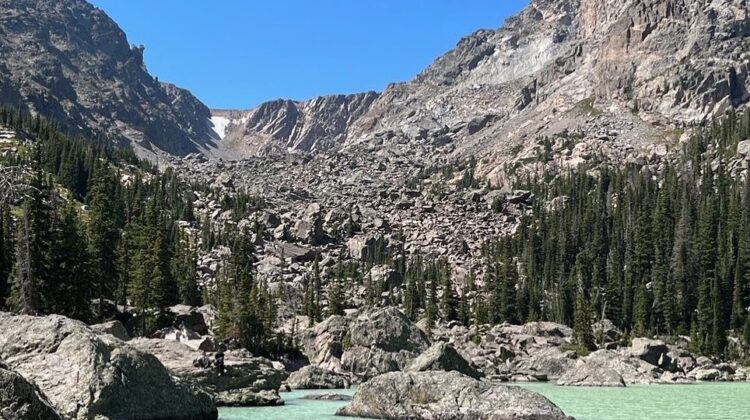
With so much information out there, it’s hard to know which is the best family guide to Rocky Mountain National Park. I am both a guidebook author and mom from Colorado. And I’ve written guides to Rocky Mountain National Park for years. I promise I won’t lead you astray.
As part of the gateway to the Rockies, Rocky Mountain National Park was designated as a national park on January 26, 1915, by President Woodrow Wilson. With 415 square miles, RMNP is one of the highest national parks in elevation, sitting between 7,860 feet to 14,259 feet. The park has over 77 peaks that reach over 12,000 feet, and the Continental Divide sits within park boundaries. Congress set aside the park as 95% wilderness, as reported by recreation.gov.
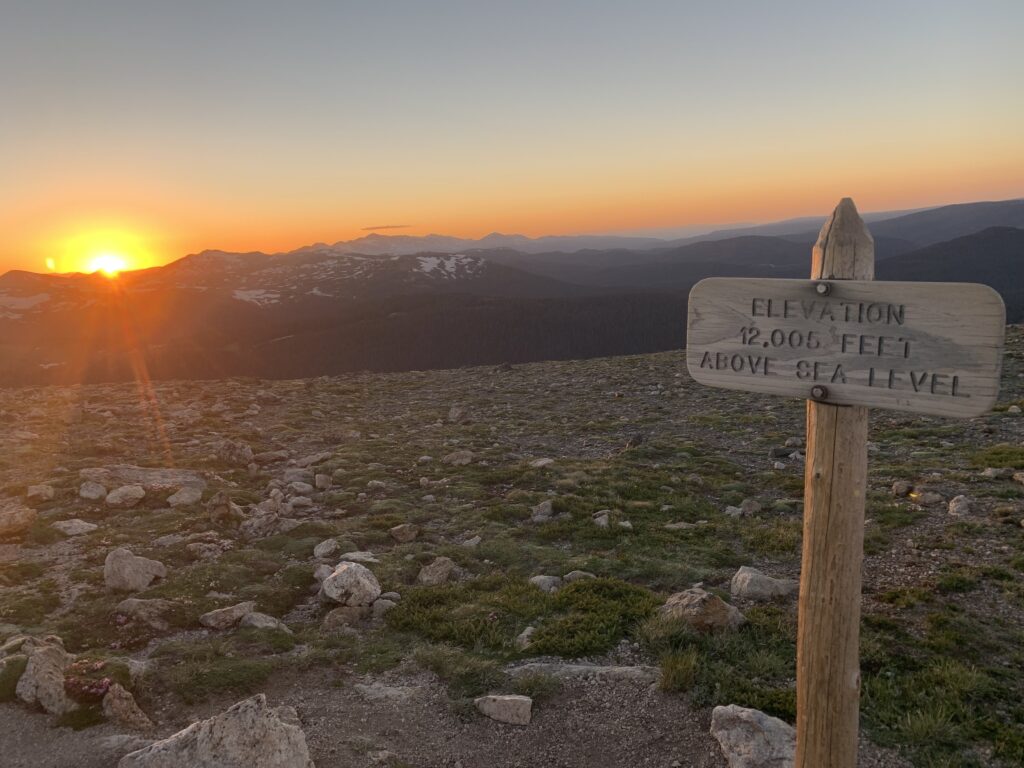
Reservations
According to nps.gov, there were over 3.3 million visitors in 2020. This places the park as one of the top three to four most visited parks, along with Zion, Yellowstone, and Great Smoky Mountains National Park. With a continued increase in park visitors, a park shuttle bus system was created for the most significant corridors in the park- Bear Lake and Moraine Park. In 2021, the park became the first park in the national park system to implement timed entry permits park-wide because of increased guests (not day-use reservations or reservations for popular parts of the park). The in-park shuttles and reservation system run from the end of May through mid-October during peak visitation.
With over 350 miles of hiking trails and a diverse animal population, Rocky Mountain National Park has become a premier destination for in-state and out-of-state visitors. The park contains over 156 lakes and four distinct ecosystems: the alpine tundra, the subalpine, the montane, and the riparian adding to its mystery and beauty.
Best Time To Visit
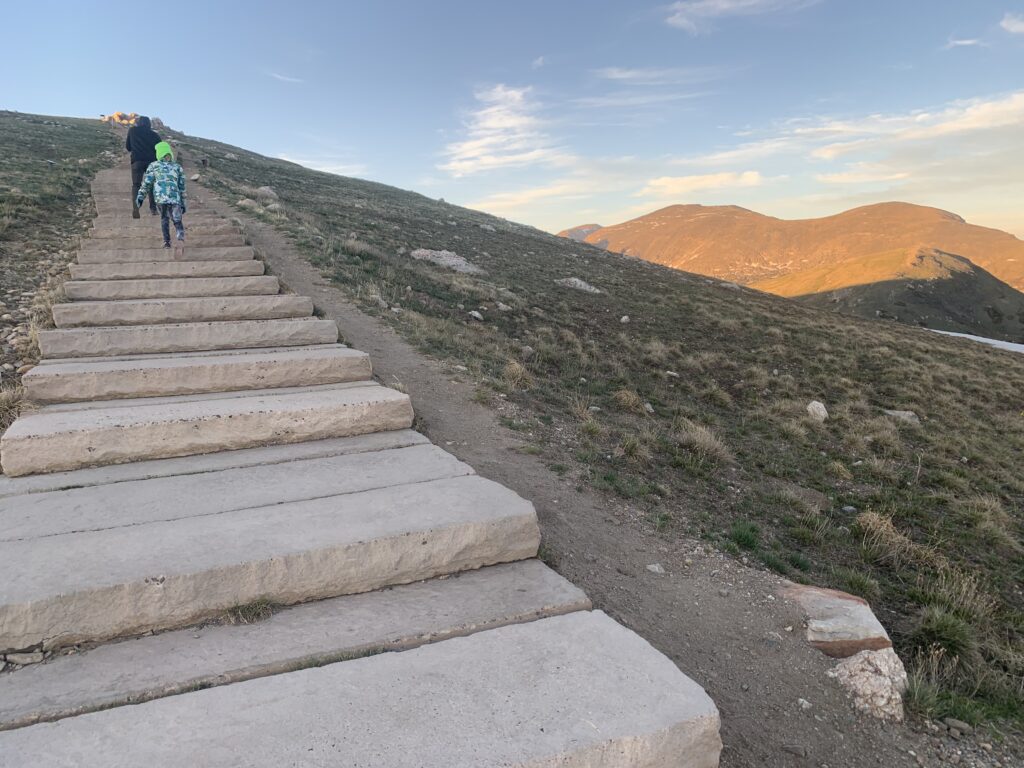
There is no best time to visit Rocky Mountain National Park. Winter brings its own unique experiences, while spring brings new life to the park. These are the quietest times to visit. Summer and fall are the most popular times to enjoy the park with the changing seasons and time off from school. The reservation system keeps visitation numbers down, but expect crowds, delays, and lots of foot traffic on the trails, especially on weekends and holidays. With that said, you can always find isolation within the park.
Native American Connection
The Rocky Mountain Conservancy states that land within RMNP was once inhabited by the Arapaho and Ute Tribes for long periods of time. There is no known rock art within the park, but you can take some of the east and west routes the tribes took searching for food, shelter, land, and trade. The 8.2 miles out and back Flattop Mountain Trail, called the ”Big Trail” by the Arapaho Indians, was one of their main pathways. Along the alpine tundra is the rather barren 8-mile Ute Trail- a route taken by the Ute and Arapaho within the park to travel to and from their summer and winter hunting grounds on the Great Plains. On the National Register of Historic Places, Trail Ridge Road was once a main thoroughfare for tribes long before it became one of the main paved arteries within the park.
The Continental Divide was the separation point between the Arapaho and Ute Tribes, although evidence of battles between the two tribes has been found within the park. Most hostile behaviors was caused by access to hunting grounds since both tribes were hunter-gatherers. The Ute’s primarily spent time in the west part of the park in the areas of Lake Granby and Grand Lake.
The park was also a pass-through for other tribes, including the Cheyenne, Apache, Eastern Shoshone, Apache, and Comanche. Once gold was discovered in Colorado in 1858, the Pike’s Peak Gold Rush forced the tribes off of the land within the park as prospectors claimed land.
11 Things to Do in Rocky Mountain National Park
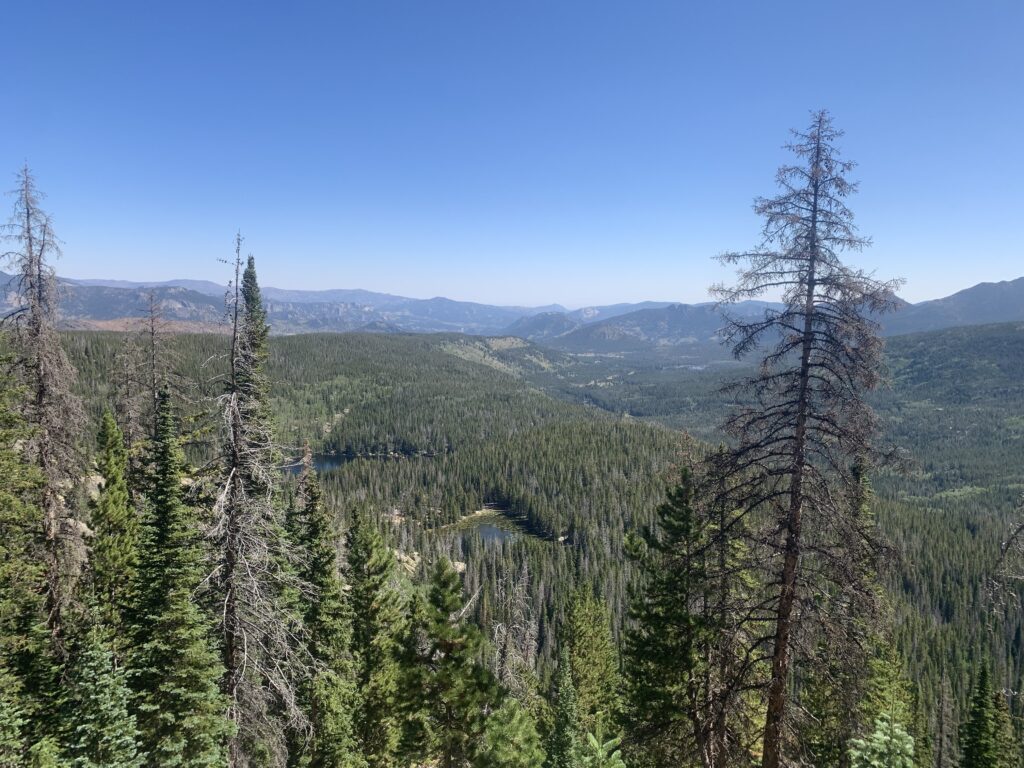
Want to take a drive on the highest continuous paved road in the U.S?
The Civilian Conservation Corps completed Trail Ridge Road in 1932. At 48 miles long, the trail runs through the park connecting Estes Park and Grand Lake towns. This road is open seasonally, closing from mid to late October to late May, depending on the weather. Passing through several ecosystems, the road provides the best terrain for spotting marmots, moose, and other animals within the park. Several pullouts along the way are perfect for having a picnic, stretching the legs, and taking in the scenery.
A visit to the highest park service area in the national park system is worth it
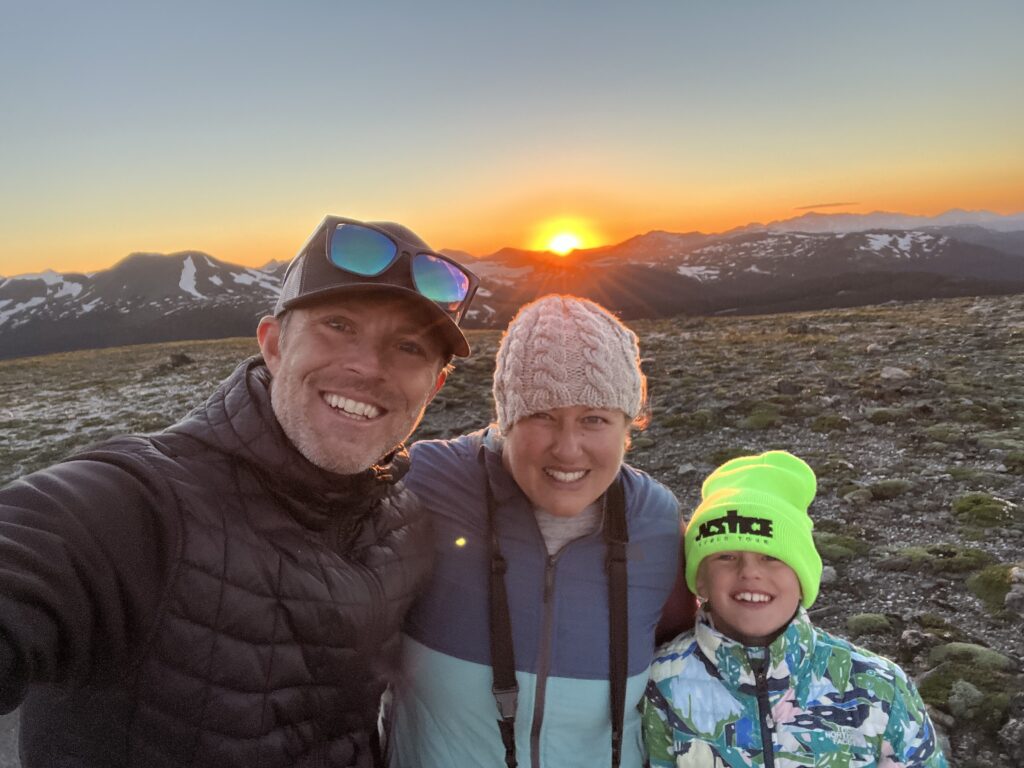
Alpine Visitor Center is the highest-elevation visitor center in the national park system. Visit the center to grab a souvenir or snack. Our family recommends taking in a sunset from the top of the Alpine Ridge Trail that climbs 162 feet from the visitor center’s parking lot up to 12,005 feet. We spent the Summer Solstice in 2022 having a charcuterie board dinner before taking in the longest day of the year from the top of the Alpine Ridge Trail. With 360-degree mountain views and a pink sky, it was the perfect way for my family to usher in a fun summer of exploring and adventure.
Hearing an elk bugle is popular on a fall bucket list
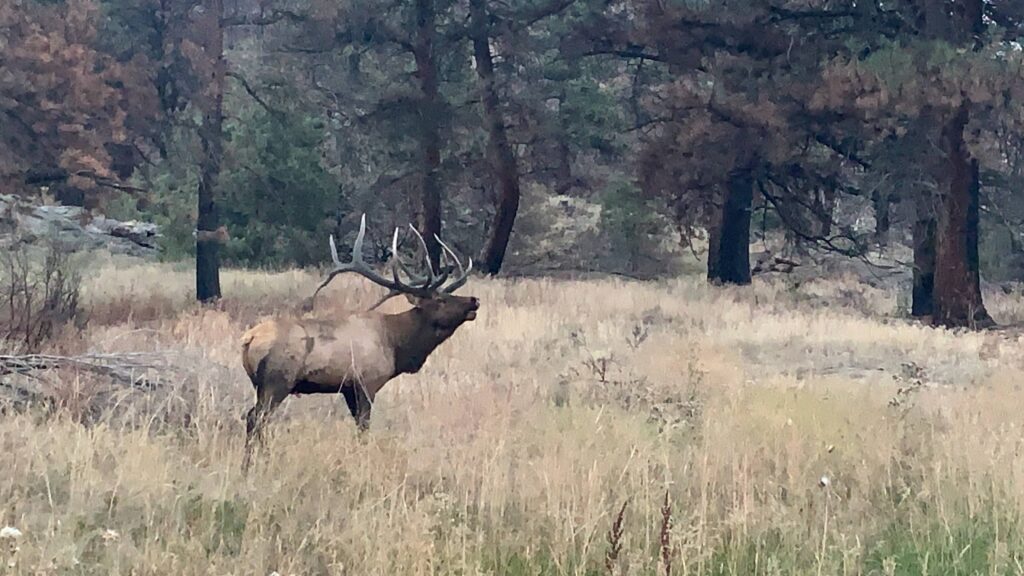
From early to mid-September, the elk rut brings hundreds of people to the park to experience this magical time of year. My family makes a yearly visit to the park to enjoy the bugle. We never tire of hearing the guttural sounds and watching the standoff between bucks. The town of Estes holds an elk festival around the beginning of October. Other animals to enjoy preparing for the winter are the chipmunks and squirrels in search of nuts, and the pika, which may be gathering grass for “haystacks” that they will eat while buried under the snow for winter. According to the National Park Service, over 60 species of animals and over 200 birds are in the park. Any visit provides an opportunity to observe wildlife in its natural habitat.
All five visitor centers in the park offer something special
Between the park’s five visitor centers is a vast collection of close to 35,000 objects that highlight the park’s rich history. You can find almost 300 works of art and geological specimen, including rocks and minerals. Spend time chatting with a volunteer or ranger; they always enjoy telling you about the park’s history. Don’t forget to grab a Jr. Ranger booklet if you have young park explorers, so they can earn a badge for visiting the park. The booklet can also be returned to a visitor center to be exchanged for a badge.
Year round ranger programs are free and educational
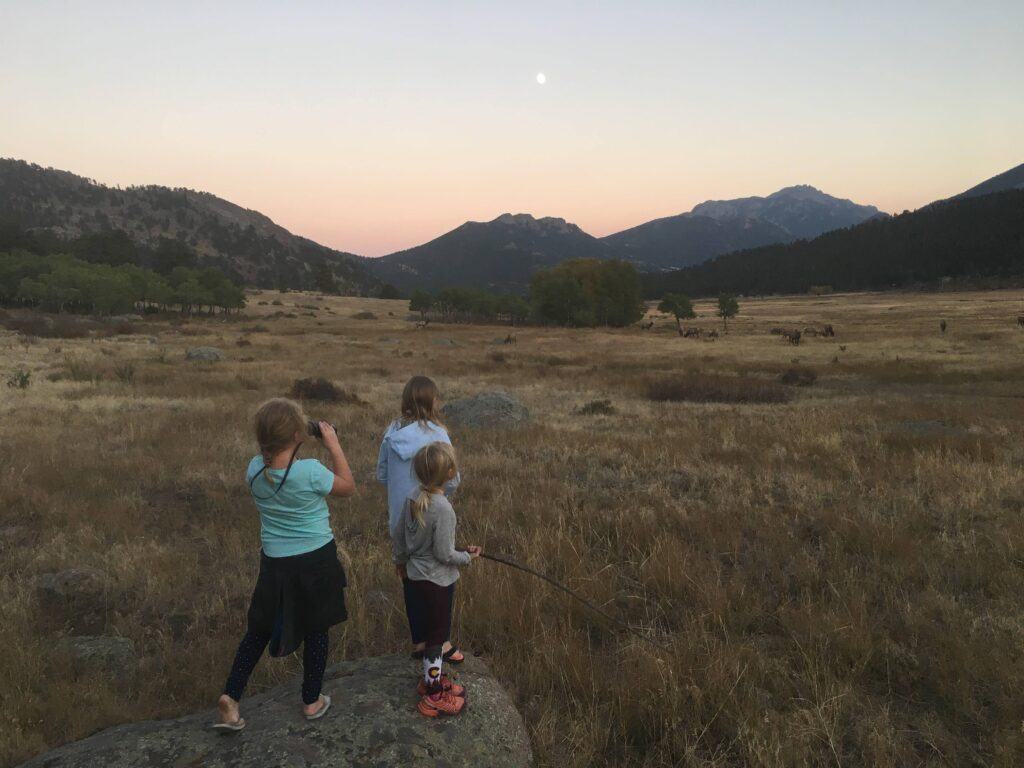
No family guide to Rocky Mountain National Park would be complete without a mention of the ranger programs. Rocky Mountain has one of the best ranger programs out of all the national parks in the U.S. When you attend a free ranger program at Rocky Mountain National Park, you’ll learn all kinds of things. Seasonal talks about the elk rut, hibernation, and animal preparation are typically on the calendar. Throughout the summer, they hold Friday night star parties. Winter programs include snowshoe treks, animal track identification, and more. Our family’s favorite programs are the summer nighttime programs held at the various campgrounds and the campfire and marshmallow roasting sing-alongs.
Star gazers will rejoice when they visit the park at night
Even though it hasn’t been designated as an International Dark Star Park, there are plenty of open areas perfect for stargazing within the park. Winter skies open up to clear viewing conditions. Last summer, the park offered Night Sky Programs on Friday nights throughout the summer. It’s also an excellent place for Jr. Rangers to earn their Night Explorers badge like my daughter did at a star program during the Perseids Meteor Shower in 2018.
Snowshoe across frozen lakes for a winter adventure
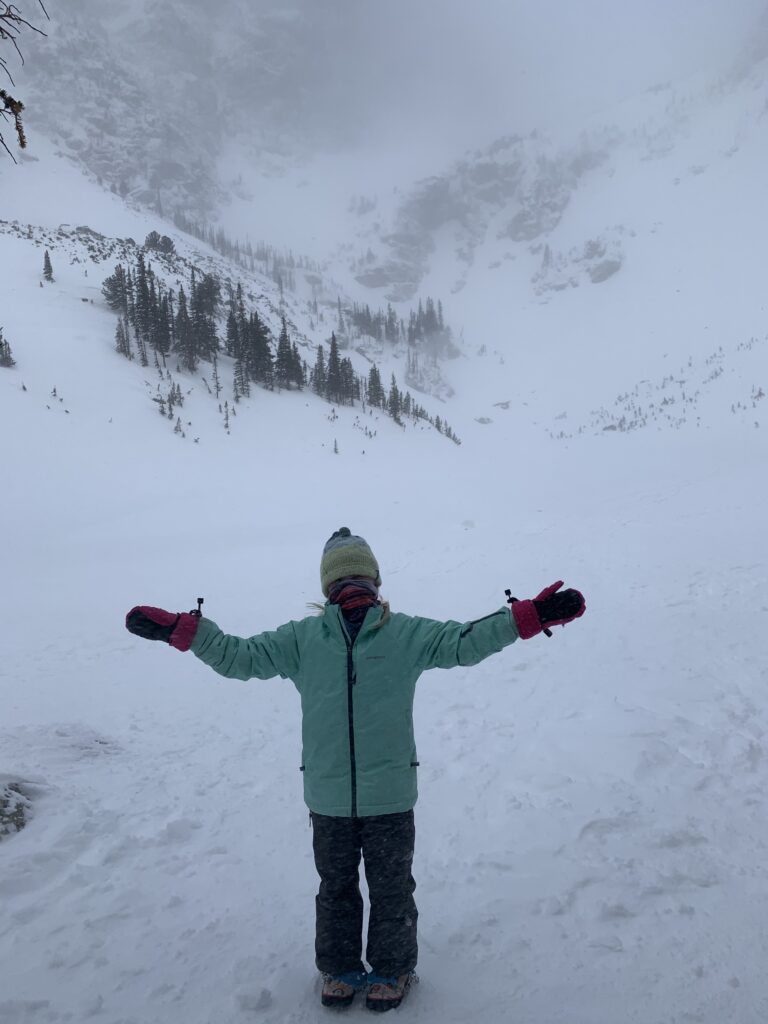
Take a hike (snowshoe) across the frozen Dream and Nymph Lakes to Emerald Lake in the winter. Beginning at Bear Lake, the summer crowds have disappeared bringing solace and a new way of seeing the landscape. Even though the distance seems short at 3.5, based on the route you take, winter conditions make it an adventure. In true winter fashion, my daughter and I battled 50 plus mph winds on our hike to the lake in March. To experience snowshoeing across mountain lakes we viewed lily pads growing in just months before was pretty epic. We enjoyed time sliding down hills, and saw a friendly mountain chickadee. They are one of the few birds that stay for the winter.
Pitch a tent in the park for a wild experience
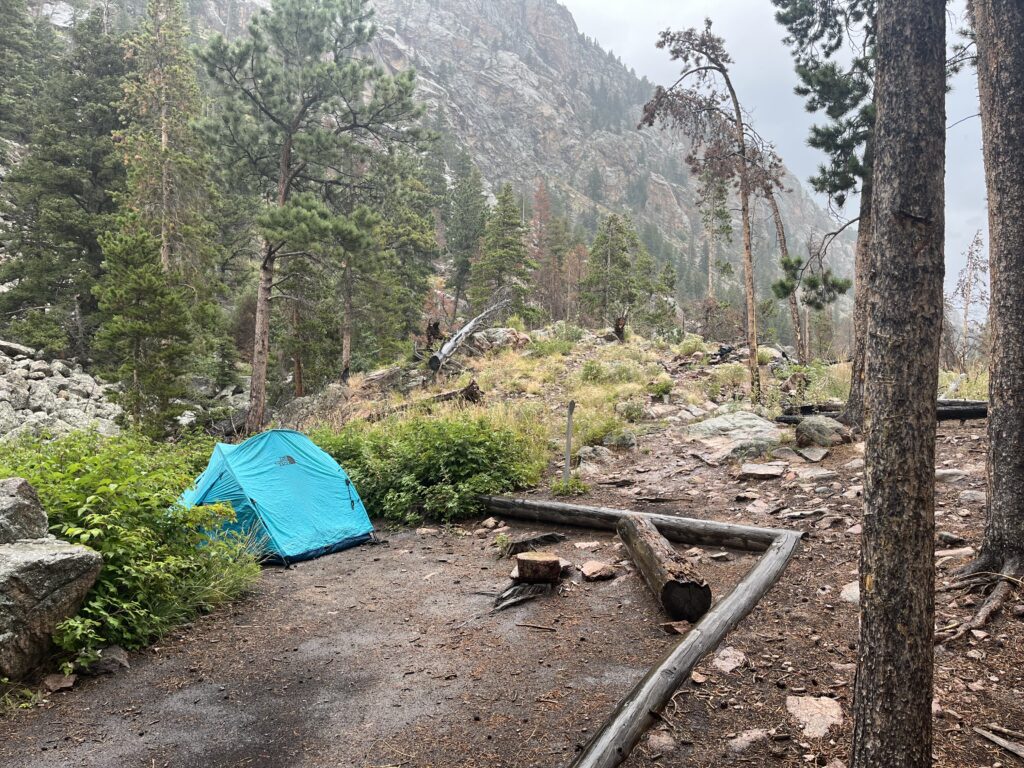
Camping at one of the four campgrounds at RMNP allows for great access to trails, wildlife and beautiful scenery. There are four reservable campgrounds and one first come first serve. Sites go fast when they open up for reservation 6 months in advance on recreation.gov. Spending a night in the park may remind you of being in a zoo. We spent this past Labor Day weekend camping there and heard bugling elk, hawking coyotes and a pair of hooting owls right above our tent.
The backcountry offers a chance to see the park differently
If you are looking to get away from the crowds, spend a night or two in the backcountry. Spots (120 depending on fire damage, and other factors) are available from the Bear Lake area to the Mummy Range. There is even a wheelchair-accessible backcountry spot near Sprague Lake. For a short hike in, we recommend Arch Rock, where we camped this past August. We used this guide to plan our wilderness camping. From April 1- Oct 31, backpackers must use a bear canister. Permits are now available digitally through recreation.gov and open for booking on March 1st.
Sled into a winter wonderland at the park
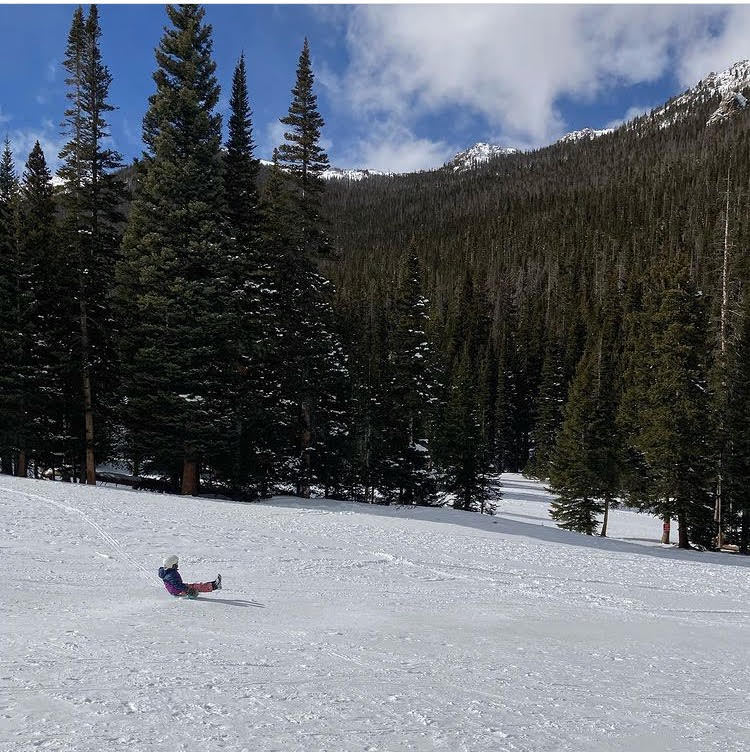
Did you know you can sled in Rocky Mountain National Park? There are a few national parks you can sled in, including RMNP. Hidden Valley was once the site of a ski area from 1941 to 1992. Now the bunny hill has become the place to sled when snow levels permit. It is open seven days a week from 10 a.m. to 4 p.m. Remember to bring your own sleds and tubes (no sleds with metal runners). A warming hut is open on the weekends when there is enough volunteer staff.
Lake views await on this popular hike
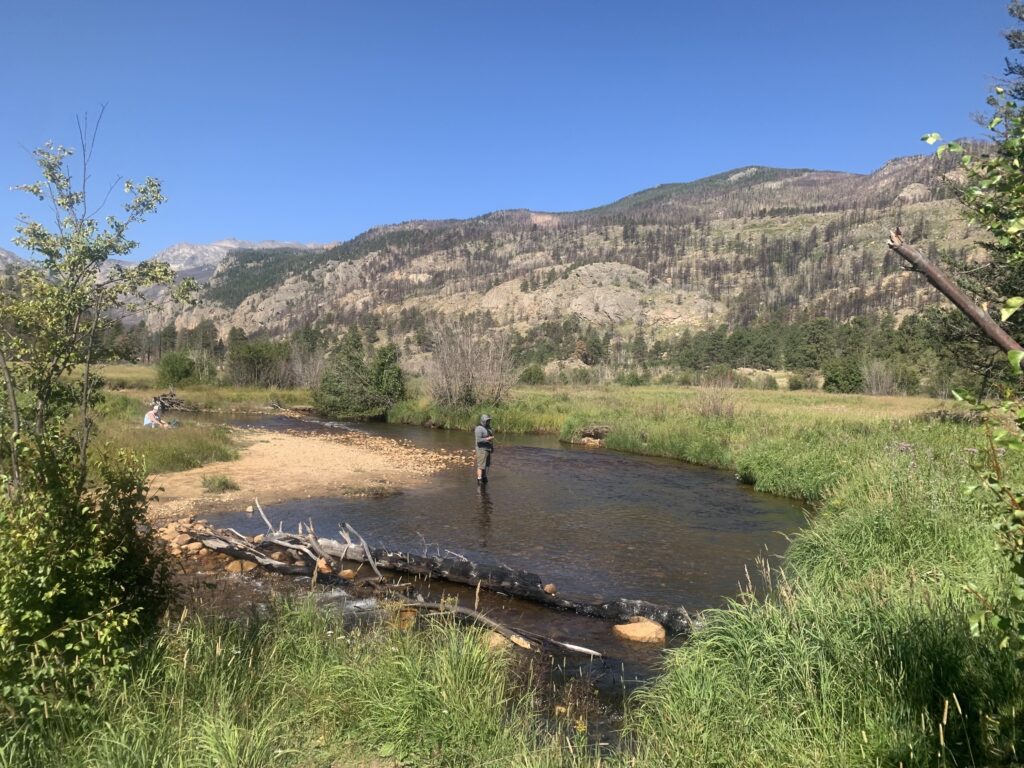
If you are looking for an abundance of lake views, hike to the Loch. An Irish term for sea inlet or lake, the overall hike is 5.7 miles long with 1,00 feet of climbing. Less than a mile in, the trail leads to Alberta Falls. This 30-foot waterfall is one of the most popular destinations in the park. Except some crowd thinning here as some people only hike to this spot and back. After you continue on Loch Vale Trail, you will see the Icy Brook cascades.
The Loch is one of the most photographed, and scientist studied watersheds worldwide about erosion, wind, and other environmental impacts. Take in the views of Taylor Glacier and Peak before heading back to the trailhead. As of when this guide is published, Lake Haiyaha is currently a milky blue color due to a recent rockslide. Stop by this lake as an out and back to take in the geological changes. Then head to The Loch for 8.3 miles total. An alternative full-day route is to continue this hike to Andrews Tarn, Timberline Falls, and Sky Pond for 9 miles, not including Lake Haiyaha.
Leave No Trace
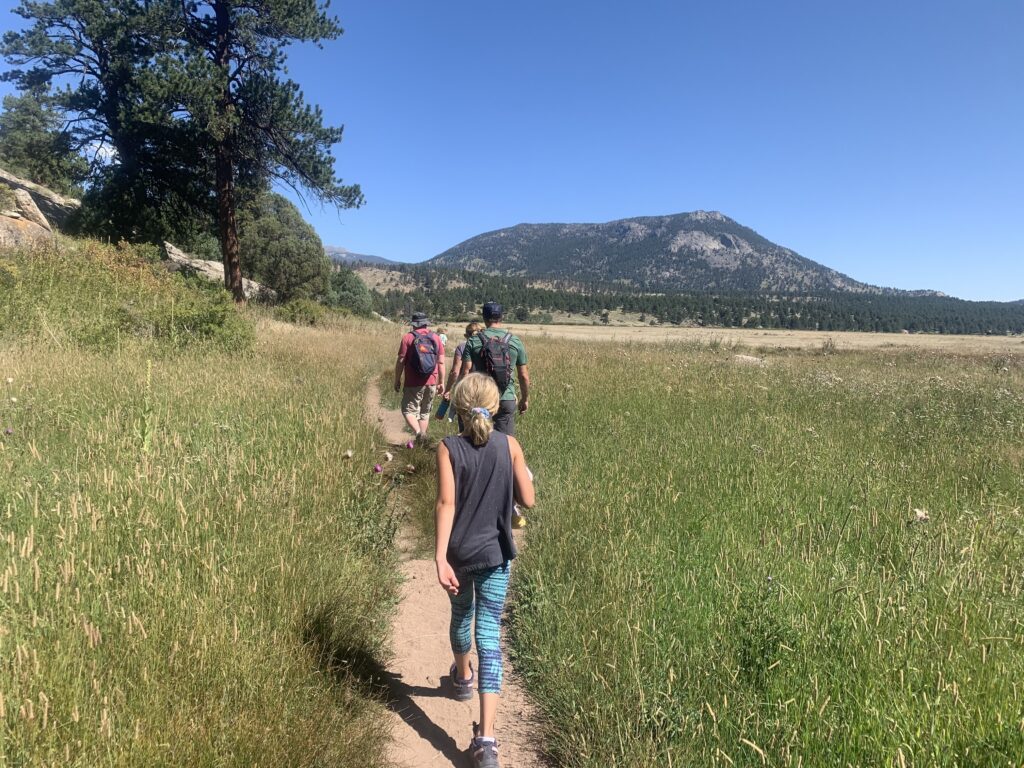
One last note in this family guide to Rocky Mountain National Park. The concept of Leave No Trace is vital to follow anytime you visit the wilderness. Following these tips gives you a good start to being a responsible visitor to our great national parks and monuments. These steps will help parks remain open to future generations.
- Plan Ahead & Prepare
- Travel & Camp on Durable Surfaces
- Dispose of Waste Properly
- Leave What You Find
- Minimize Campfire Impacts
- Respect Wildlife
- Be Considerate of Other Visitors
You won’t be disappointed with a visit to Rocky Mountain National Park, no matter what season. The scenery can’t be beaten, from the 77 peaks over 12,000 feet to the alpine lakes. The hiking is top-notch, while the scenic routes in the park allow visitors to visit numerous ecosystems while also being able to stop and see wildlife in action. A day, or multiple days in the park, are days not wasted.
More National Park Family Guides
Looking for more family-friendly guides to America’s national parks? See the complete list here.
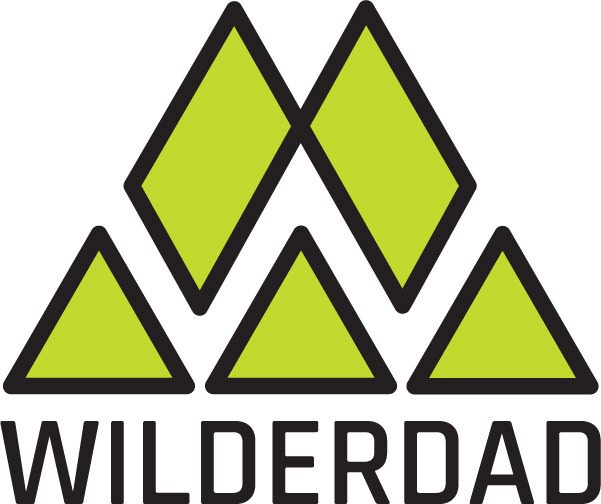
Leave a Reply
You must be logged in to post a comment.